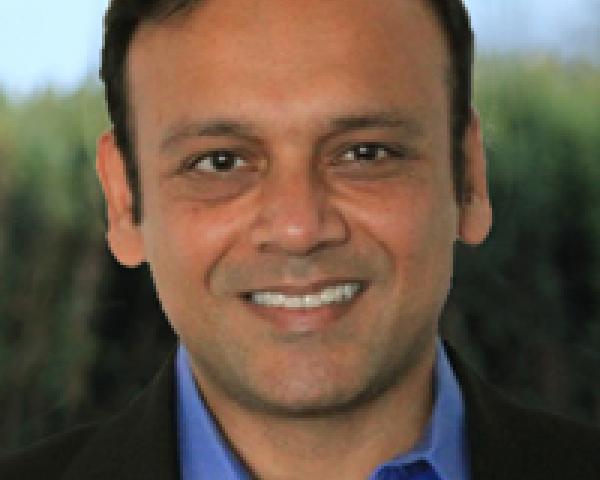An Open Letter on the Oklahoma Option
"The conclusion (by ProPublica and NPR) misses the mark in pinpointing why so many WC systems are broken beyond repair."

"The conclusion (by ProPublica and NPR) misses the mark in pinpointing why so many WC systems are broken beyond repair."

Get Involved
Our authors are what set Insurance Thought Leadership apart.
|
Partner with us
We’d love to talk to you about how we can improve your marketing ROI.
|

Daryl Davis is a member of the American College of Occupational and Environmental Medicine and is sought after by governmental agencies, insurance carriers, risk managers and others in this field. Davis founded www.WorkersCompensationOptions.com, a company committed to WC and legal alternatives to WC.
Many employers get talked into just comparing this year's premiums against last year's. Tougher questions need to be asked.

Get Involved
Our authors are what set Insurance Thought Leadership apart.
|
Partner with us
We’d love to talk to you about how we can improve your marketing ROI.
|

Andy Neary is a healthcare strategist with VolkBell in Longmont, CO. Neary has more than 14 years of experience in helping employers affect the rising cost of healthcare through innovative strategies. His strategies help employers cut through the complexity of a broken healthcare system.
The life insurance industry is suffering from a dying (literally) distribution model, complex products and a flawed purchase funnel, but....

Get Involved
Our authors are what set Insurance Thought Leadership apart.
|
Partner with us
We’d love to talk to you about how we can improve your marketing ROI.
|

Amy Radin is a transformation strategist, a scholar-practitioner at Columbia University and an executive adviser.
She partners with senior executives to navigate complex organizational transformations, bringing fresh perspectives shaped by decades of experience across regulated industries and emerging technology landscapes. As a strategic adviser, keynote speaker and workshop facilitator, she helps leaders translate ambitious visions into tangible results that align with evolving stakeholder expectations.
At Columbia University's School of Professional Studies, Radin serves as a scholar-practitioner, where she designed and teaches strategic advocacy in the MS Technology Management program. This role exemplifies her commitment to bridging academic insights with practical business applications, particularly crucial as organizations navigate the complexities of Industry 5.0.
Her approach challenges traditional change management paradigms, introducing frameworks that embrace the realities of today's business environment – from AI and advanced analytics to shifting workforce dynamics. Her methodology, refined through extensive corporate leadership experience, enables executives to build the capabilities needed to drive sustainable transformation in highly regulated environments.
As a member of the Fast Company Executive Board and author of the award-winning book, "The Change Maker's Playbook: How to Seek, Seed and Scale Innovation in Any Company," Radin regularly shares insights that help leaders reimagine their approach to organizational change. Her thought leadership draws from both her scholarly work and hands-on experience implementing transformative initiatives in complex business environments.
Previously, she held senior roles at American Express, served as chief digital officer and one of the corporate world’s first chief innovation officers at Citi and was chief marketing officer at AXA (now Equitable) in the U.S.
Radin holds degrees from Wesleyan University and the Wharton School.
To explore collaboration opportunities or learn more about her work, visit her website or connect with her on LinkedIn.
The selection of coaches often still lacks a robust, structured process; here is a three-stage approach that can help.

Get Involved
Our authors are what set Insurance Thought Leadership apart.
|
Partner with us
We’d love to talk to you about how we can improve your marketing ROI.
|

Paul Laughlin is the founder of Laughlin Consultancy, which helps companies generate sustainable value from their customer insight. This includes growing their bottom line, improving customer retention and demonstrating to regulators that they treat customers fairly.
It is worth highlighting the hope of driverless cars—in the form of the seven huge societal benefits that would ensue. It is a magical list.

* * *
As I’ve previously acknowledged, a vast number of technical and implementation challenges have to be overcome before these societal benefits can be reaped. World-class engineers and scientists stand on either side of the question about whether these challenges can be adequately addressed. Arthur C. Clarke was one of the believers. Clarke predicted in 1962 that “the automobile of the day-after-tomorrow will not be driven by its owner, but by itself.” See Also: Lack of Enthusiasm for Driverless Cars? More generally, Clarke also had something to say about seemingly impossible challenges. He observed, “The only way of discovering the limits of the possible is to venture a little way past them into the impossible.” As to the arguments of world-class engineers and scientists, Clarke had this to offer: When a distinguished but elderly scientist states that something is possible, he is almost certainly right. When he states that something is impossible, he is very probably wrong. Let’s hope that the distinguished Arthur C. Clarke was right.
Get Involved
Our authors are what set Insurance Thought Leadership apart.
|
Partner with us
We’d love to talk to you about how we can improve your marketing ROI.
|

Chunka Mui is the co-author of the best-selling Unleashing the Killer App: Digital Strategies for Market Dominance, which in 2005 the Wall Street Journal named one of the five best books on business and the Internet. He also cowrote Billion Dollar Lessons: What You Can Learn from the Most Inexcusable Business Failures of the Last 25 Years and A Brief History of a Perfect Future: Inventing the World We Can Proudly Leave Our Kids by 2050.
Although there is agreement that the U.S. corporate tax rate should be lowered, there is disagreement on key issues.

Get Involved
Our authors are what set Insurance Thought Leadership apart.
|
Partner with us
We’d love to talk to you about how we can improve your marketing ROI.
|

Larry Campbell is a managing director in PwC's Washington National Tax Services (WNTS) Tax Policy Services Group, where he advises clients on tax legislation and provides analysis of legislative and regulatory issues of interest to the firm's practice offices and clients.

Mark Smith is a managing director with PwC’s tax services, specializing in issues affecting insurance companies and products that they issue.
Robots allow the focus to be on the customer, while they do all the tedious, "swivel-chair automation."

 Regarding robotics, a quick summary from me would include:
What it means for insurance (and most other industries)
Regarding robotics, a quick summary from me would include:
What it means for insurance (and most other industries)

Get Involved
Our authors are what set Insurance Thought Leadership apart.
|
Partner with us
We’d love to talk to you about how we can improve your marketing ROI.
|

Nigel Walsh is a partner at Deloitte and host of the InsurTech Insider podcast. He is on a mission to make insurance lovable.
He spends his days:
Supporting startups. Creating communities. Building MGAs. Scouting new startups. Writing papers. Creating partnerships. Understanding the future of insurance. Deploying robots. Co-hosting podcasts. Creating propositions. Connecting people. Supporting projects in London, New York and Dublin. Building a global team.
With sophisticated air traffic control, JFK has gone from a few hundred flights a day to thousands. Hospitals can make the same leap.

Get Involved
Our authors are what set Insurance Thought Leadership apart.
|
Partner with us
We’d love to talk to you about how we can improve your marketing ROI.
|

Sanjeev Agrawal is the president of the healthcare business and the chief marketing officer at LeanTaaS, a Silicon Valley company that uses advanced data science to optimize healthcare operations. Agrawal was Google's first head of product marketing.
The answer is yes, but a lot of mistakes have been made, and the industry still needs to sort itself out.

Get Involved
Our authors are what set Insurance Thought Leadership apart.
|
Partner with us
We’d love to talk to you about how we can improve your marketing ROI.
|

Tony Steuer connects consumers and insurance agents by providing "Insurance Literacy Answers You Can Trust." Steuer is a recognized authority on life, disability and long-term care insurance literacy and is the founder of the Insurance Literacy Institute and the Insurance Quality Mark and has recently created a best practices standard for insurance agents: the Insurance Consumer Bill of Rights.
Artificial intelligence will identify, assess and underwrite emerging risks and identify new revenue sources.






 Emerging risk identification through man-machine learning
“People worry that computers will get too smart and take over the world, but the real problem is that they’re too stupid and they’ve already taken over the world.” —Pedro Domingos, author of The Master Algorithm
Emerging Risks & New Product Innovation
Identifying emerging risks (e.g., cyber, climate, nanotechnology), analyzing observable trends, determining if there is an appropriate insurance market for these risks and developing new coverage products in response historically have been creative human endeavors. However, collecting, organizing, cleansing, synthesizing and even generating insights from large volumes of structured and unstructured data are now typically machine learning tasks. In the medium term, combining human and machine insights offers insurers complementary, value-generating capabilities.
Man-Machine Learning
Artificial general intelligence (AGI) that can perform any task a human can is still a long way off. In the meantime, combining human creativity with mechanical analysis and synthesis of large volumes of data—in other words, man-machine learning (MML)—can yield immediate results.
For example, in MML, the machine learning component sifts through daily news from a variety of sources to identify trends and potentially significant signals. The human-learning component provides reinforcement and feedback to the ML component, which then refines its sources and weights to offer broader and deeper content. Using this type of MML, risk experts can identify emerging risks and monitor their significance and growth. MML can further help insurers identify potential customers, understand key features, tailor offers and incorporate feedback to refine product introduction.
Computers That “See”
In 2009, Fei-Fei Li and other AI scientists at Stanford AI Laboratory created ImageNet, a database of more than 15 million digital images, and launched the ImageNet Large Scale Visual Recognition Challenge (ILSVRC). The ILSVRC awards substantial prizes to the best object detection and object localization algorithms.
The competition has made major contributions to the development of “deep learning” systems, multilayered neural networks that can recognize human faces with more than 97% accuracy, as well as recognize arbitrary images and even moving videos. Deep learning systems can now process real-time video, interpret it and provide a natural language description.
Artificial Intelligence: Implications for Insurers
AI’s initial impact relates primarily to improving efficiencies and automating existing customer-facing, underwriting and claims processes. Over time, its impact will be more profound; it will identify, assess and underwrite emerging risks and identify new revenue sources.
Emerging risk identification through man-machine learning
“People worry that computers will get too smart and take over the world, but the real problem is that they’re too stupid and they’ve already taken over the world.” —Pedro Domingos, author of The Master Algorithm
Emerging Risks & New Product Innovation
Identifying emerging risks (e.g., cyber, climate, nanotechnology), analyzing observable trends, determining if there is an appropriate insurance market for these risks and developing new coverage products in response historically have been creative human endeavors. However, collecting, organizing, cleansing, synthesizing and even generating insights from large volumes of structured and unstructured data are now typically machine learning tasks. In the medium term, combining human and machine insights offers insurers complementary, value-generating capabilities.
Man-Machine Learning
Artificial general intelligence (AGI) that can perform any task a human can is still a long way off. In the meantime, combining human creativity with mechanical analysis and synthesis of large volumes of data—in other words, man-machine learning (MML)—can yield immediate results.
For example, in MML, the machine learning component sifts through daily news from a variety of sources to identify trends and potentially significant signals. The human-learning component provides reinforcement and feedback to the ML component, which then refines its sources and weights to offer broader and deeper content. Using this type of MML, risk experts can identify emerging risks and monitor their significance and growth. MML can further help insurers identify potential customers, understand key features, tailor offers and incorporate feedback to refine product introduction.
Computers That “See”
In 2009, Fei-Fei Li and other AI scientists at Stanford AI Laboratory created ImageNet, a database of more than 15 million digital images, and launched the ImageNet Large Scale Visual Recognition Challenge (ILSVRC). The ILSVRC awards substantial prizes to the best object detection and object localization algorithms.
The competition has made major contributions to the development of “deep learning” systems, multilayered neural networks that can recognize human faces with more than 97% accuracy, as well as recognize arbitrary images and even moving videos. Deep learning systems can now process real-time video, interpret it and provide a natural language description.
Artificial Intelligence: Implications for Insurers
AI’s initial impact relates primarily to improving efficiencies and automating existing customer-facing, underwriting and claims processes. Over time, its impact will be more profound; it will identify, assess and underwrite emerging risks and identify new revenue sources.
Get Involved
Our authors are what set Insurance Thought Leadership apart.
|
Partner with us
We’d love to talk to you about how we can improve your marketing ROI.
|

Scott Busse is a director at PwC Advisory in the insurance practice. He has over 13 years of consulting experience helping clients undergo change and realize value through the strategic use of technology and information.

Anand Rao is a principal in PwC’s advisory practice. He leads the insurance analytics practice, is the innovation lead for the U.S. firm’s analytics group and is the co-lead for the Global Project Blue, Future of Insurance research. Before joining PwC, Rao was with Mitchell Madison Group in London.

Jamie Yoder is president and general manager, North America, for Sapiens.
Previously, he was president of Snapsheet, Before Snapsheet, he led the insurance advisory practice at PwC.